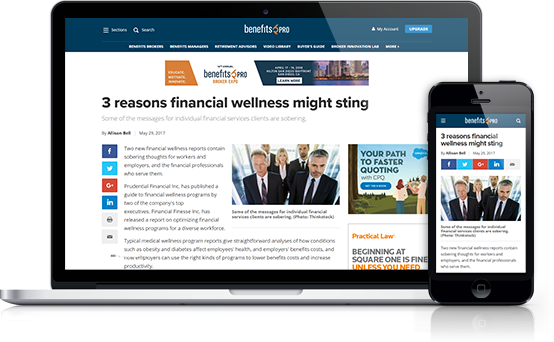 As employers' health care premiums rise to the tune of 8.5% for 2024, HR professionals and benefits consultants are exploring alternatives to group coverage. The first stop for many companies feeling the full weight of that increase – which is nearly double what it was from 2022 to 2023 – is to consider moving from fully insured plans to a self-funded strategy.
As employers' health care premiums rise to the tune of 8.5% for 2024, HR professionals and benefits consultants are exploring alternatives to group coverage. The first stop for many companies feeling the full weight of that increase – which is nearly double what it was from 2022 to 2023 – is to consider moving from fully insured plans to a self-funded strategy.
While transitioning a company to a self-funded model can show some initial cost savings, it's not always a silver bullet for employers in the long run. For many organizations, an individual coverage health reimbursement arrangement (ICHRA) is the better solution. Below, we explore how ICHRAs can pick up where self-funding leaves off.
First, let's break down the key differences between the two health insurance options.
|Self-funded plans
Self-funded plans, sometimes called administrative services only (ASO) plans, function much like their fully insured counterparts. However, they come with an increased risk for employers, tend to have a high degree of administrative complexity, and offer little in terms of predictable cost savings. In addition, they:
|- Differ from traditional plans in risk tolerance and funding, plan design flexibility, and overall administration.
- Can be customized and offer employers more choice over plan designs, carriers, and third-party administrators (TPAs).
- Shift the financial risk from the carrier to the employer, allowing for reinsurance via individual and aggregate stop-loss arrangements.
ICHRAs
An ICHRA is a type of employer-provided health benefit plan that allows employees to choose their own health insurance coverage and to receive tax-advantaged funds from their employer for a portion of their plan's premiums and qualified medical expenses. With an ICHRA, choice is the central theme.
|- Employers enjoy being able to choose exactly how much they want to contribute, tax-free, to employees' health coverage.
- At the same time, employees have an abundance of choice in their health plans like never before; they can shop around for the individual health plan that best fits their needs instead of settling for one or two options selected by their employer.
5 reasons ICHRAs could be a an alternative to self-funding
1. Predictable pricing
Moving from fully insured to self-funded doesn't eliminate the claims risk for a company; it simply shifts that risk to the employer, making it a yearly gamble. An ICHRA, on the other hand, disperses the risk across the much larger individual market, so pricing remains much more stable.
Recommended For You
Complete your profile to continue reading and get FREE access to BenefitsPRO, part of your ALM digital membership.
Your access to unlimited BenefitsPRO content isn’t changing.
Once you are an ALM digital member, you’ll receive:
- Breaking benefits news and analysis, on-site and via our newsletters and custom alerts
- Educational webcasts, white papers, and ebooks from industry thought leaders
- Critical converage of the property casualty insurance and financial advisory markets on our other ALM sites, PropertyCasualty360 and ThinkAdvisor
Already have an account? Sign In Now
© 2025 ALM Global, LLC, All Rights Reserved. Request academic re-use from www.copyright.com. All other uses, submit a request to [email protected]. For more information visit Asset & Logo Licensing.








